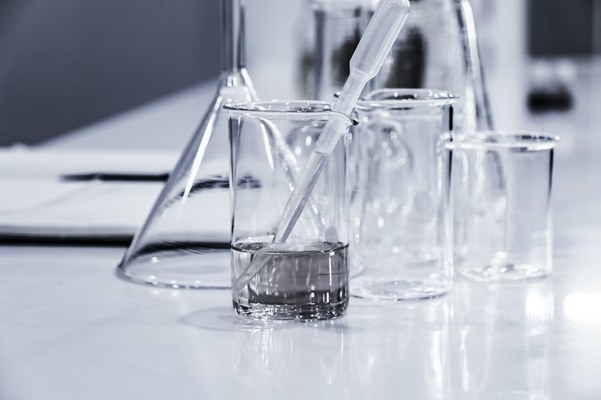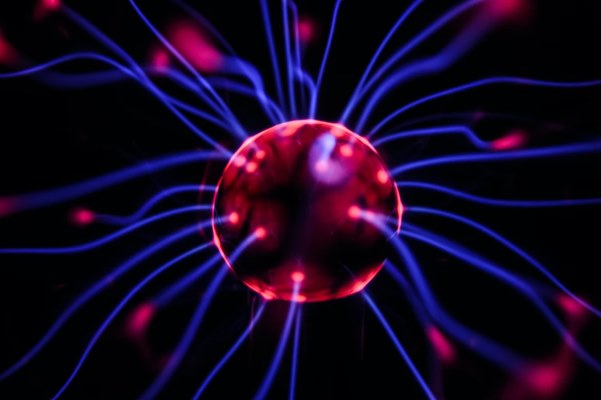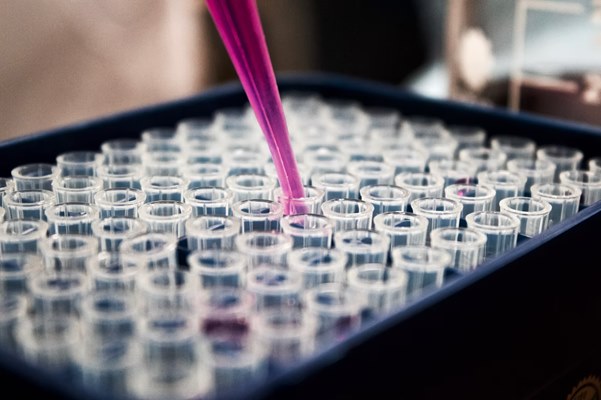Understanding Protein Expression Systems and Their Types
Nov 26th 2021
Understanding Protein Expression Systems and Their Types
Infectious diseases like cancers are among the primary causes of death worldwide. Besides, the development and production of therapeutic proteins for treating infections and diseases at a large scale are fundamental needs of humankind. Several recent signs of progress in recombinant DNA technologies have paved the way to developing recombinant proteins and performing peptide synthesis. This is actioned for the researchers to utilize them as vaccines, therapeutics, and diagnostic reagents.
When it concerns recombinant proteins for such applications, researchers produce them by using eukaryotic and prokaryotic expression host systems like bacteria, mammalian cells, insect cells, yeast, and transgenic plants at the laboratory scale and large-scale setups. Moreover, the development of efficient and effective bioprocessing approaches is crucial in industrial recombinant protein production. Research departments have recently made numerous advances to produce effective and practical processes for developing recombinant proteins.
 These comprise significantly high-throughput devices for efficient bioprocess optimization, continuous upstream processing, disposable systems, integrated continuous bioprocessing, continuous chromatography, process analytical technologies, and Quality by Design to obtain quality products with higher yields. Meanwhile, protein expression refers to a method where researchers regulate, synthesize, and modify proteins in living and active organisms. However, this term applies to either the laboratory techniques or the object of study needed to manufacture and produce proteins in protein research. In practical terms, recombinant protein production relies on utilizing cellular machinery.
These comprise significantly high-throughput devices for efficient bioprocess optimization, continuous upstream processing, disposable systems, integrated continuous bioprocessing, continuous chromatography, process analytical technologies, and Quality by Design to obtain quality products with higher yields. Meanwhile, protein expression refers to a method where researchers regulate, synthesize, and modify proteins in living and active organisms. However, this term applies to either the laboratory techniques or the object of study needed to manufacture and produce proteins in protein research. In practical terms, recombinant protein production relies on utilizing cellular machinery.
Introduction to protein expression
Several scientists and researchers have regulated and synthesized proteins, depending upon their functional requirements in the cell. Later on, they store the protein blueprints in the DNA and decode them by regulated transcriptional methods to enhance messenger RNA production. Post this step; they translate the coded message into a protein. Moreover, it is essential to know that transcription is the information transfer from the DNA to mRNA. Meanwhile, translation is the synthesis process of proteins based on specific sequences regulated by mRNA.
In prokaryotes, the approach of translation and transcription occurs proficiently and simultaneously. mRNA translation also begins before researchers fully synthesize a mature mRNA transcript. Such a simultaneous gene translation and transcription is termed coupled translation and transcription. On the other hand, the processes concerning eukaryotes comprise spatially separation that could occur sequentially with transcriptions amid the nucleus. While researchers proceed with specific experiments and production methods, several external factors can determine the expression system to develop recombinant proteins. They are:
- Time taken in expressing proteins
- The ease of handling expression systems
- The specific amount of protein required
- Protein’s mass
- Number of disulfide bonds and types of post-translational modifications
- Expressed protein’s destination
Another method of expressing recombinant proteins in an expression system needs the following components or information.Gene identification that can encode proteins of interest
- cDNA generation from a specific mRNA
- Suitable expression vector selection to insert gene sequences
- Appropriate system selection to express the vector
- Suitable scaling up and screening methods
Transcription and translation
Transcription is one of the processes that occur in three steps in eukaryotes and prokaryotes: elongation, initiation, and termination. It begins when double-stranded DNAs get unwound, allowing the RNA polymerase binding. Once researchers initiate transcription, the RNA polymerase gets released through the DNA. Besides, you can regulate it at several levels through repressors and activators and the chromatin structure present in eukaryotes. However, when it pertains to prokaryotes, you do not require any unique mRNA modification.

This is because the translation process begins even before the initials are complete. In eukaryotes, mRNA is further administered to eliminate splicing (introns), in addition to the cap at the 5’ end, along with several adenines at the 3’ end of mRNA to produce a polyA tail. Towards the end, a team of researchers can export the modified mRNA to the cytoplasm to achieve the translation approach.
Custom protein synthesis or translation is a multi-step method that needs macromolecules such as transfer RNAs (tRNA), ribosomes, protein, mRNA factors, and tiny molecules like ATP, amino acids, GTP, and various other cofactors. Besides, there are several protein factors for every translation step where the entire process is similar in eukaryotes and prokaryotes, although specific differences exist.
When it concerns the initiation period, the small subunit of the whole ribosome bound to initiator tRNA tends to scan the mRNA, beginning at the 5’end to bind and identify the AUG or initiation codon. Meanwhile, the most significant subunit of the whole ribosome joins the less-significant subunit to produce the initiation complex. Sequences in mRNA and specific protein factors are also involved in the initiation codon recognition and initiation complex formation. However, during the elongation process, the tRNAs interact with their specific amino acids, also reckoned as tRNA charging, and accommodate them to the ribosome, where they get polymerized to develop into a peptide, which can also be utilized amid the peptide synthesis process. Moving on, researchers add the amino acid sequences to the developing peptide while it is dependent on the transcript’s mRNA sequence.
To conclude, they release the nascent polypeptide into the termination process when ribosomes reach the point of codon termination. This is where researchers release ribosomes from the mRNA and ready themselves to commence with another translation round.
Post-translational modification
After translation, the polypeptides get modified in multiple ways to finish their structure, regulate their activities and designate the locations within the cells. Moreover, post-translational changes and modifications are numerous alterations and additions to the entire chemical components and are essential features of fundamental cell biology.
Forms of post-translational modifications comprise:
- Researchers folding polypeptides into globular proteins through the assistance of chaperone proteins to obtain the lowest energy state
- Amino acids’ modifications present, like first methionine residue’s removal
- Disulfide bridge reduction or formation
Protein modifications that can facilitate binding functions include:
- Protein prenylation for membrane localization
- Glycosylation
- Histones’ acetylation to change or modify DNA–histone binding
Functional group additions to administer and regulate protein activity:
- Nitrosylation
- Phosphorylation
- GTP binding
Recombinant protein expression methods
In simpler terms, proteomics studies include investigating multiple aspects of proteins like function, structure, localization, modifications, or protein interactions. When it concerns the investigation of how particular proteins administer biology, researcher departments typically need many means of manufacturing functional proteins.
Given the complexity and size of proteins of interest, chemical synthesis will not be suitable for such an endeavor. Instead, researchers harness the living cells and their cellular components as factories to construct and build proteins based on generic templates. However, unlike proteins, DNA is straightforward to construct in vitro or synthetically utilizing established techniques of recombinant DNA. As a result, the entire set of DNA templates of particular genes, you can build affinity tag sequences and add-on reporters as templates for the unstable protein expression step.
Recombinant Proteins: Proteins produced from DNA templates
Conventional strategies for recombinant protein expressions comprise immunoblotting cells with DNA vectors that include the selected templates and then culturing cells to translate and transcribe the specific protein of interest. You can lyse the cells to obtain the expressed proteins for the following purification processes in typical terms. Moving on, both eukaryotic and prokaryotic in vivo unstable protein expression models are widely utilized by researchers.

When selecting the desired protein system, one has to consider the requirements for the desired yield and functional activities and the protein type. Researchers can also summarize such expression systems on a platform that comprises insect, mammalian, bacterial, yeast, algal, and cell-free. Each of these systems has its set of challenges and advantages, and choosing a suitable system for specific applications is essential for the successful expression of recombinant proteins.
Mammalian protein expression
Due to the physiological application environment, you can utilize the mammalian expression systems to generate mammalian proteins of interest with maximum native structures and activities. Moreover, the mammalian expression system is one of the preferred systems for mammalian protein expression. It can be modified for antibody productions, proteins for use, and complex proteins in cell-based assays. But, one can assist these benefits with more demanding cultural conditions.
A researcher can utilize the mammalian expression system to produce proteins through stable cell lines or transiently, where expression constructs get incorporated into host genomes. On the other hand, one can use cell lines over various experiments to generate and produce high-yield mammalian expression systems. This is one of the methods that can also produce gram-per-liter yields and outputs. Such proteins of interest have a significant amount of post-translational modifications and native folding, like glycosylation in contrast with other systems. Studying some research pieces on different mammalian systems will enable you to understand how to use recombinant proteins.
Features
- Transient expression is rapid and easy
- Offers all post-translational modifications
- Stable transfection outputs in scalability, higher yield, and reproducible production
Insect protein expression
Under the insect protein expression system, the researcher usually utilizes insect cells for a highly unstable protein expression level, but with transformations similar to mammalian systems. These are various systems used by individuals to craft recombinant baculovirus, which can be further used to express proteins in insect cells. Besides, researchers tend to scale up and adapt such systems to high-density suspension culture for protein’s large-scale expression. This is because it is relatively similar to the native protein used in the mammalian system. Since its yield can be around 500 mg/L, the recombinant production of baculovirus can comprise culture conditions and be time-consuming than other prokaryotic systemsA baculovirus expression system protocol uses Invitrogen Gateway technology to clone. According to one of the research pieces, an individual can produce a gene of interest after an hour of transfection in insect cells and recombinase reaction. Moving on, you can perform a quick-expression test before scaling up expressions and amplifying the viral stock. The utilization of such a system enables you to obtain baculovirus expression in selected insect cells.
Features
- The recombinant protein is expressed in the latter phases of the lytic cycle.
- Ideal to produce secreted and cytoplasmic proteins
Bacterial protein expression
Bacterial expression systems are prevalent since bacteria are straightforward to grow fast, easy to culture, and produce recombinant protein high yields. However, multi-domain eukaryotic proteins of interest in bacteria are often non-functional. This is because the cells are not provisioned to achieve specified post-translational molecular folding or modifications. Moreover, several proteins can develop an insoluble nature as inclusion bodies are pretty challenging to recover in the absence of subsequent cumbersome protein-refolding and complex denaturant procedures.
Cell-free protein expression
As the name signifies, the cell-free protein expression system uses translation-compatible extracts in vitro synthesis of proteins of interest. In principle, the whole-cell extract comprises all the components and macromolecules required for translation, transcription, and post-translational modification. Such macromolecules contain regulatory protein factors, RNA polymerase, ribosomes, transcription factors, and tRNA. Besides, supplementing it with nucleotides, cofactors, and the gene template can lead to custom protein synthesis in a few hours.
While it is not sustainable for large-scale production, in vitro translation of cell-free protein expression systems has numerous benefits over conventional IVs or in vitro systems. Furthermore, the cell-free expression system enables you to synthesize recombinant proteins without promoting the cell culture quickly. The cell-free expression method allows researchers to ensure protein labeling with expressions of protein and modified amino acids that later undergo rapid degradation through intracellular proteases.
It is also essential to know that cell-free methods make it simple to express more than one protein simultaneously (testing mutations through expression over a small-scale recombinant DNA template).
Chemical protein synthesis
When it pertains to chemical or custom protein synthesis, researchers can utilize it for applications that require proteins labeled at particular sites, proteins labeled with unnatural amino acids, or proteins toxic to a biological expression system. In addition, the chemical synthesis system tends to produce highly pure proteins. However, such a system only works ideally for small peptides and proteins. To conclude, a yield is usually on the lower side with chemical synthesis, with the method being relatively expensive for more extended polypeptides.
Final Thoughts
Choose an expression system that can express proteins of interest with desirable post-translational modifications. Regardless of your preferred option, many insects and mammalian cell lines, competent cells, and related products can suit any protein system. In the end, every protein expression system has its advantages and disadvantages.

